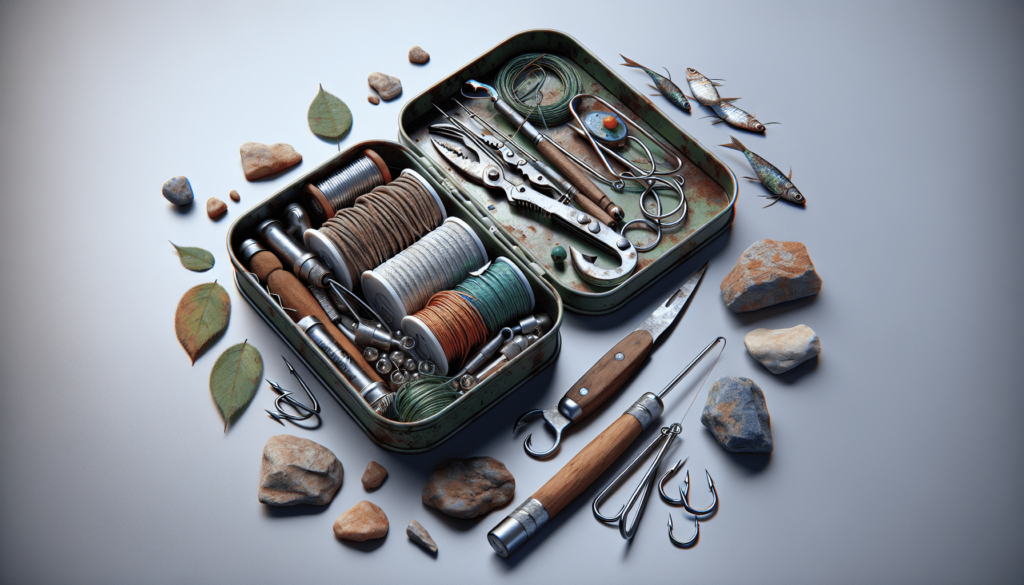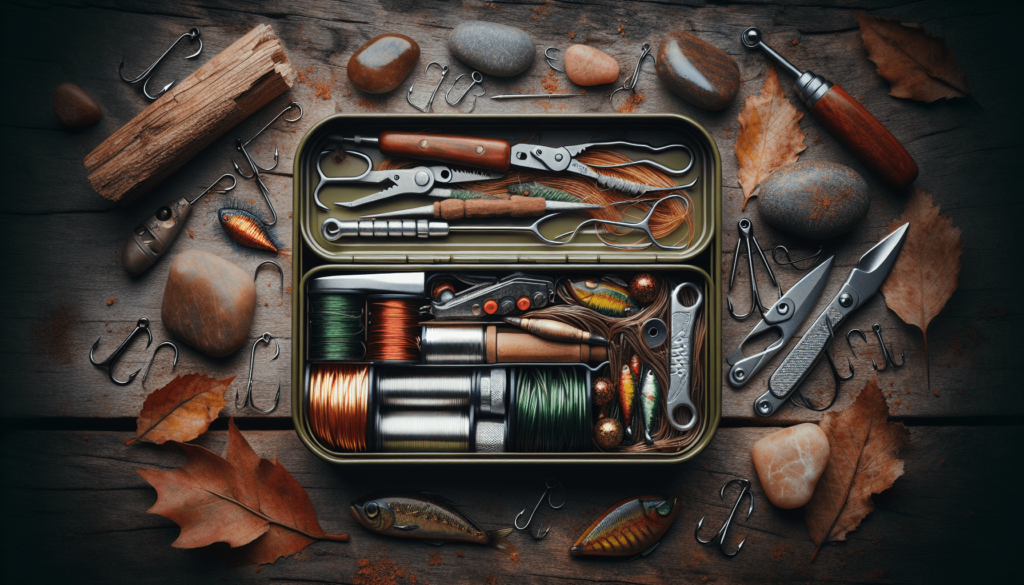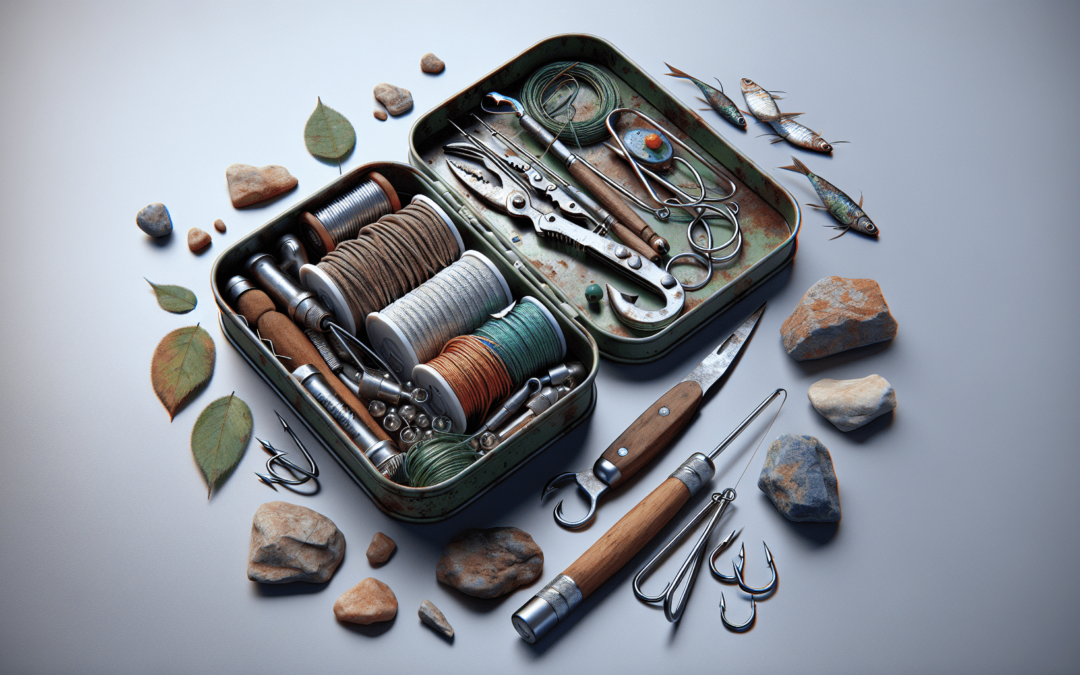Crafting your very own survival fishing kit is not only an essential skill but also a rewarding experience that equips you for any unexpected situation. In “How To Make A Survival Fishing Kit,” you’ll discover step-by-step instructions on gathering the right materials, choosing compact and efficient tools, and packing it all in a way that ensures you’re always prepared. With just a small, portable kit, you’ll have everything you need to catch fish and secure food in an emergency, giving you peace of mind and the confidence to handle the wilderness. Have you ever wondered how you would catch food if you were stranded in the wilderness? Having a survival fishing kit can be the difference between going hungry and catching a fresh meal if you’re ever faced with an unexpected situation. In this guide, we’ll walk you through everything you need to know about building your own survival fishing kit, from the essential items to pack to the skills you’ll need to catch fish effectively.
Why You Need a Survival Fishing Kit
In any survival situation, finding food is a top priority. Fish provide a valuable source of protein and calories that can sustain you when other food sources are scarce. A well-crafted survival fishing kit ensures you’re prepared for such situations, increasing your chances of catching fish and ultimately surviving.
Essential Components of a Survival Fishing Kit
Creating a survival fishing kit isn’t just about tossing some hooks and line into a bag. You need a strategic combination of items that will cover all your fishing needs. Here are the main components you’ll want to include:
Fishing Line
Fishing line is the backbone of your fishing kit. Without it, you won’t be able to catch anything. Aim for at least 50-100 feet of strong, multifilament line, which is versatile enough for different fishing conditions.
Hooks
Hooks come in various sizes, and having a range of them will increase your chances of catching different types of fish. Including both small and large hooks provides flexibility. Consider including treble hooks as well for snagging fish.
Sinkers
Sinkers help you cast your line further and keep your bait or lure submerged. Pack a variety of sizes to adapt to different water depths and currents.
| Type | Purpose | Recommended Quantity |
|---|---|---|
| Split Shot | Weighs down the line lightly | 10 |
| Egg Sinker | For deeper water | 5 |
| Bullet Weight | Slides easily through weeds | 5 |
Bobbers
Bobbers, or floats, help keep your bait suspended at the right depth. They also signal when a fish is nibbling on your bait. Include a few different sizes to match various fishing conditions.
Lures
While natural bait is ideal, it may not always be available. Portable artificial lures like spinners and jigs can be excellent alternatives. They simulate the movement of prey and can entice fish to bite.
Needle Nose Pliers
To handle hooks and fish safely, needle nose pliers are a must. They can also serve multiple purposes, from removing hooks to fixing bends in your gear.
Small Knife
A sharp, small knife is useful for cutting line, preparing bait, and cleaning fish. Choose one with a durable, easy-grip handle.
Fishing Net
Although optional, a small, collapsible fishing net can increase your chances of successfully landing a fish once you’ve reeled it in.

Assembling Your Survival Fishing Kit
Now that we’ve covered the essentials, let’s put it all together. Here’s a step-by-step guide to assembling your kit.
Step 1: Choose a Container
A durable, waterproof container is ideal for storing your fishing gear. It should be compact yet large enough to accommodate all your essentials. A small tackle box or even a repurposed plastic container can do the job.
Step 2: Organize Your Gear
Categorize your gear to make it easy to access. Use small compartments within your container for items like hooks, sinkers, and bobbers. Wrap your fishing line neatly to prevent tangles.
Step 3: Include Multipurpose Tools
Add multipurpose tools like a multi-tool or Swiss Army knife. These tools can handle various small tasks, from cutting line to tweaking lures.
Step 4: Waterproofing
Ensuring your kit remains dry is crucial. Use ziploc bags to store items individually or use silica gel packs to absorb moisture inside the container.
Step 5: Manual and Notes
Include a small manual or notes on fishing basics if you’re not highly experienced. A quick reference guide can be invaluable in a pinch.
Fishing Techniques for Survival Situations
Once you have your kit ready, it’s essential to know how to use it effectively. Here are some survival fishing techniques to increase your success rate.
Knots You Should Know
Knowing a few basic fishing knots can make a huge difference. Here are two simple yet effective knots:
- Palomar Knot: Great for securing your hook to the fishing line.
- Clinch Knot: Excellent for tying your line to various lures or swivels.
Finding the Right Spot
Fish tend to gather in specific areas based on factors like water temperature, depth, and cover. Look for locations with:
- Structure: Rocks, sunken trees, and weed beds attract fish.
- Shade: Fish often seek cooler, shaded waters during hot days.
- Movement: Areas where water is moving or has a gentle current can be rich with fish.
Setting Up Your Line
Adjusting your line setup to match conditions can improve your chances. Here’s a basic setup:
- Attach a Bobber: About 2-3 feet from the hook, depending on desired depth.
- Add a Split Shot Sinker: A foot above the hook to weigh down the bait.
- Hook Your Bait: Live bait or artificial lures should be secured onto the hook.
Casting Techniques
Proper casting can make all the difference. For beginners:
- Hold the Rod Firmly: Use both hands, angling the tip slightly upward.
- Release the Line Smoothly: Aim for a gentle arc, letting the line spool out.
- Watch the Bobber: Once it lands, wait for a bite, indicated by bobber movements.

Maintaining Your Survival Fishing Kit
Keeping your kit in top condition ensures it’s ready when you need it. Here are some maintenance tips:
Regular Inspections
Check your gear periodically for wear and tear. Replace any damaged items, especially fishing line and hooks, as these are critical to your success.
Clean & Dry Your Kit
After each use, make sure everything is clean and dry before storing. Moisture can corrode metal components and weaken the fishing line.
Update as Needed
As you gain more experience, you might find certain items more beneficial than others. Update your kit accordingly, adding or removing items to optimize your setup.
Additional Survival Fishing Tips
Survival fishing goes beyond having the right gear and technique. Here are some extra tips to enhance your survival fishing skills:
Stay Patient
Fishing requires patience. It might take time for fish to bite, especially in unfamiliar waters.
Conserve Energy
In a survival situation, conserving energy is crucial. Use methods that require minimal physical exertion, such as setting multiple lines and waiting rather than continuously casting.
Learn About Local Fish Species
Understanding the fish species in your area will help you choose the right bait and techniques. Different fish have varying behaviors and preferences.
Use Natural Bait When Possible
Natural bait like worms, insects, or small fish often work better than artificial lures. They’re more appealing to fish and can be found in your environment.
Conclusion
Creating your survival fishing kit is a critical step in being prepared for emergency situations. With the right components, proper organization, and effective techniques, you’ll be well-equipped to catch fish and sustain yourself if the need arises. Remember, the key to effective survival is preparation, knowledge, and the ability to adapt to changing conditions. Happy fishing, and stay safe out there!

